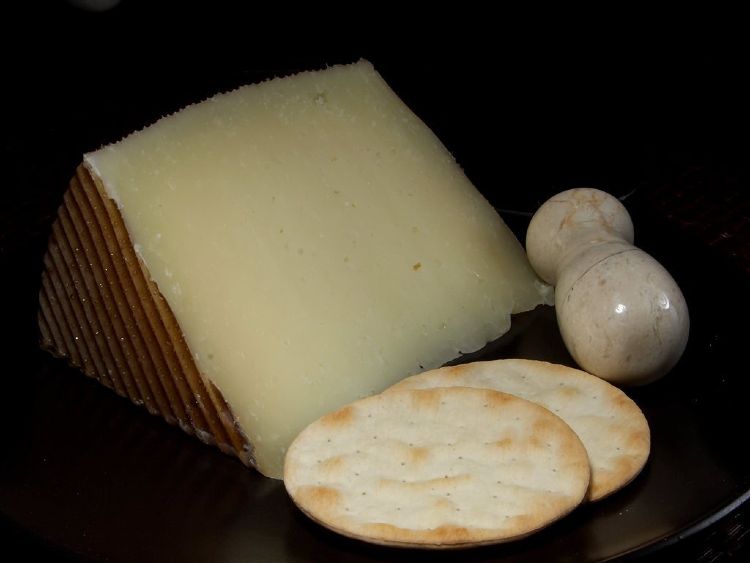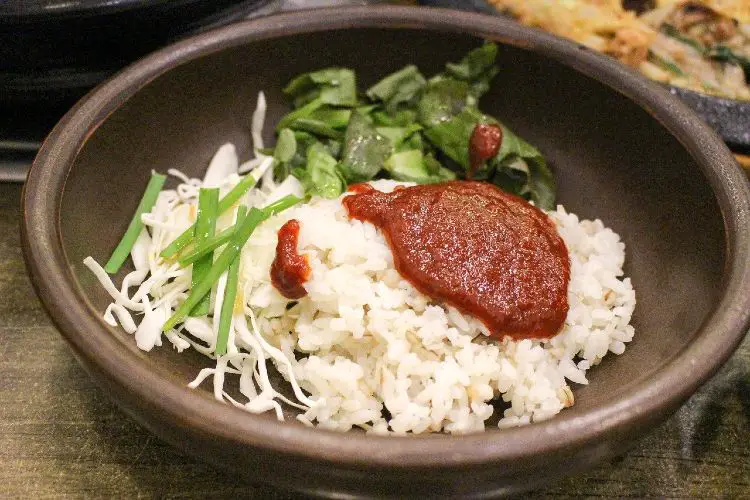What Does Sake Taste Like?
Quick Answer
The taste of sake can vary widely, but it is generally smooth and may offer a balance of sweetness, umami, and fruitiness. The flavor profile can range from rich and complex to clean and crisp. Different types of sake, such as Junmai, Daiginjo, and Nigori, have unique characteristics, and the temperature at which it’s served can also influence its taste.
What is Sake?
Sake, often referred to as Japanese rice wine, is a traditional alcoholic beverage that has been a cornerstone of Japanese culture for centuries.
Made primarily from fermented rice, sake undergoes a unique dual fermentation process involving specialized yeast and mold, known as koji.
With its complex flavor profile that can range from sweet and fruity to rich and umami, sake is not only enjoyed in Japan but has also gained international acclaim.
This article aims to delve into the fascinating world of sake, exploring its various flavor profiles, how it’s made, and how different types can offer uniquely delicious tasting experiences.
Types of Sake and Their Characteristics
Understanding the different types of sake is crucial for appreciating the range of flavors and characteristics this unique beverage offers. Here are some common types:
Junmai
Junmai sake is made purely from rice, water, yeast, and koji, with no additional alcohol. It’s known for its rich, full-bodied taste that often includes robust umami flavors. It’s versatile and can be enjoyed warm, at room temperature, or chilled. Junmai is often recommended for those who are new to sake because of its straightforward, robust flavor.
Ginjo & Daiginjo
Both Ginjo and Daiginjo are premium categories of sake, distinguished primarily by the degree to which the rice is milled before brewing. The more the rice is milled, the more refined and complex the resulting flavors tend to be. Ginjo sakes are aromatic, often with floral or fruity notes, and are best enjoyed chilled to appreciate their complexity. Daiginjo is a subcategory of Ginjo, representing the pinnacle of the brewer’s art. These sakes are generally the most fragrant and complex, often consumed in smaller sips to appreciate their intricacy.
Honjozo
In Honjozo sake, a small amount of distilled alcohol is added to the brew. This results in a beverage that is lighter, easier to drink, and less robust than Junmai types. Honjozo sake is often enjoyed warm and pairs well with a variety of foods.
Nigori
Nigori sake is unfiltered, meaning that some rice particles remain in the liquid, giving it a cloudy appearance. This type of sake is generally sweeter and creamier, with a thicker texture. Nigori is often served chilled and can be an excellent dessert sake.
Namazake
Namazake is unpasteurized sake, which means it’s extremely fresh and must be kept refrigerated to prevent spoilage. The absence of pasteurization allows Namazake to retain its freshest, most vibrant flavors, but it’s also more perishable than other types.
What Does Sake Taste Like?
When tasting sake, you’ll encounter a broad spectrum of flavors that are influenced by factors like the type of rice, the brewing process, and even the water used in production. Here are some of the most commonly noted flavor profiles:
Sweetness
Some types of sake, particularly Nigori and certain Junmai varieties, can be noticeably sweet. This sweetness often balances out the other flavors and makes for a more rounded taste profile. For those accustomed to dry wines, the natural sweetness in sake can be a delightful change.
Umami
Umami, often described as a savory or meaty taste, is a defining characteristic of many sakes, especially Junmai types. The rich, complex umami flavor can be akin to that found in broths and other savory dishes, providing a deep, fulfilling taste experience that lingers on the palate.
Fruitiness
Many premium sakes, such as Ginjo and Daiginjo, are noted for their fruity aromas and flavors. Common notes include apple, pear, and sometimes tropical fruits like melon. These fruity elements often provide a counterbalance to the umami and sweetness, making the sake more complex and layered.
Smoothness and Acidity
One of the distinguishing features of sake compared to other alcoholic beverages like wine is its relatively low acidity. This contributes to a smoother mouthfeel and makes sake quite easy to drink. The smoothness can be particularly prominent in Honjozo and Junmai varieties, which are often described as velvety or silky.
FAQs
Is All Sake Sweet?
No, sake can range from sweet to dry, depending on the type and brewing process. While some sakes like Nigori are often sweeter, others like certain Junmai or Daiginjo varieties can be quite dry.
What Is The “Umami” Flavor In Sake?
Umami is a savory taste found in many foods and beverages, including sake. In sake, umami often manifests as a rich, complex flavor that can be similar to that found in broths or meats. Junmai sakes are particularly known for their umami profile.
Can Sake Be Fruity?
Yes, certain types of sake, particularly in the Ginjo and Daiginjo categories, are known for their fruity flavor notes, which can include apple, pear, and even tropical fruits like melon.
Does The Flavor Change With Temperature?
Absolutely, the flavor of sake can change significantly depending on whether it is served hot, at room temperature, or chilled. For example, hot sake may emphasize umami and alcohol, while chilled sake often highlights sweetness and fruitiness.
What Does Nigori Sake Taste Like?
Nigori sake is generally cloudy and has a creamier, thicker texture. It’s often sweeter than other types of sake and may have a more pronounced rice flavor due to the presence of rice particles.
Is Sake High In Acidity?
Compared to other alcoholic beverages like wine, sake generally has lower acidity. This contributes to its smooth mouthfeel, making it easier to drink for some people.
How Does The Type Of Rice Affect The Taste?
Different types of rice can produce sakes with varying levels of sweetness, umami, and complexity. Premium sakes often use highly polished rice, which can lead to more refined and complex flavors.
Can I Pair Sake With Foods Other Than Japanese Cuisine?
Absolutely, sake is versatile and pairs well with a variety of foods, not just Japanese cuisine. Its range of flavors can complement dishes from seafood and cheese to grilled meats and even some desserts.
Does Sake Get Better With Age?
Unlike certain wines that improve with age, most sake is intended to be consumed relatively soon after production. However, there are specialized aged sakes known as “Koshu,” which have a different, often nuttier, flavor profile.
Is There A “Correct” Way To Taste Sake?
While there’s no single “correct” way to taste sake, it’s generally recommended to start by smelling it to identify its aroma, and then taking small sips to explore its range of flavors. Different temperatures and serving methods can also offer varying experiences.
Does Sake Taste the Same as Vodka?
No, sake and vodka are distinctly different beverages with unique flavor profiles and production methods. Vodka is a distilled spirit, usually made from grains or potatoes, and is characterized by its high alcohol content and neutral flavor.
Sake, on the other hand, is a fermented rice wine with a much lower alcohol content, usually ranging from 15% to 18%. Its flavor can vary from sweet to dry, with notes of fruitiness, umami, and varying levels of complexity depending on the type. While vodka aims for purity and neutrality, sake offers a broad spectrum of flavors and aromas.
Does Sake Taste like Soju?
While both sake and soju are Asian alcoholic beverages, they are not the same and have different taste profiles.
Soju is a Korean distilled spirit, typically made from grains like barley or rice, and it has a higher alcohol content than sake, usually around 20-25%. Soju is often more neutral in flavor compared to sake and can sometimes have added flavors or sweeteners.
Sake, with its wide variety of types, can range from sweet to dry, with notes of fruit, flower, and umami. The brewing and distillation methods also differ significantly between the two drinks.
How to Drink Sake?
There are various ways to enjoy sake, depending on the type and your personal preference:
- Temperature: Sake can be served chilled, at room temperature, or warmed. Premium sakes are often better enjoyed chilled to appreciate their complex flavors.
- Serving Vessel: Traditional sake is often served in a “tokkuri” (a ceramic flask) with small ceramic cups known as “ochoko.” However, wine glasses are also increasingly used for premium sakes.
- Pairing: Sake pairs well with a wide range of foods, not just Japanese cuisine. From seafood to grilled meats and even some cheeses, the pairing possibilities are extensive.
- Tasting: When tasting sake for the first time, it’s advisable to start with a small sip to allow your palate to adjust to its unique flavors.
Is Sake like Beer?
Sake and beer are both fermented beverages, but they are quite different in taste, ingredients, and production methods. Beer is made from malted barley, hops, yeast, and water, and it goes through a single fermentation process.
Sake, on the other hand, is made from rice, water, yeast, and koji mold, and involves a unique dual fermentation process.
While beer can be hoppy, bitter, or malty, sake is generally smooth with flavors ranging from sweet to umami and fruity. Additionally, beer typically has a lower alcohol content compared to sake.
Does Sake Taste Nice?
The taste of sake can be quite pleasing but is subjective and depends on individual preferences. For those who enjoy a smooth, complex beverage with varying notes ranging from sweet and fruity to rich and umami, sake offers a delightful experience.
It’s a versatile drink that can be enjoyed in different ways and pairs well with a variety of foods. Whether you’re a novice or an aficionado, there’s likely a type of sake that you’ll find enjoyable.




